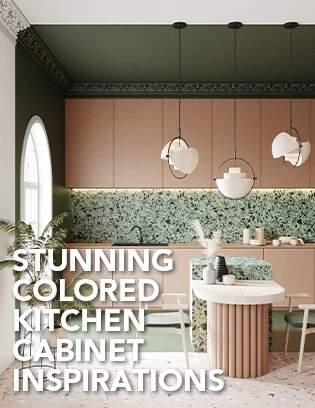6 Key Elements of Minimalist Cabinet Design
Minimalist style in home décor stands as one of the most prevalent trends today. One might assume that minimalism equates to nearly empty spaces or an absence of décor, but this notion, while partly true, doesn't fully capture the complexity behind minimalist design. Far from mere simplicity, minimalism demands meticulous attention to detail, both in construction and finishing touches. Today, we'll explore several key design elements of minimalist style.
1.Clean Lines
Minimalism distinguishes itself from mere simplicity through purposeful lines. While a space devoid of design or adornment may seem cluttered with structural elements like beams and columns, minimalist spaces strategically use curves or other design techniques to reduce visual clutter. Consistency in linearity is crucial, avoiding excessive complexity and emphasizing sleekness in furniture selection.

2.Monochrome Palette
The predominant use of black, gray, and white characterizes minimalist color schemes. Introducing color into these spaces requires caution, favoring muted tones like those found in the Morandi color palette or natural elements such as wood, earth tones, or olive green. Greenery can also add visual interest, enhancing the space's simplicity and natural ambiance.
3.Diverse Materials
While minimalism advocates for "less is more," it paradoxically allows for diverse materiality, primarily in monochromatic, matte surfaces devoid of prominent textures. However, it's essential to maintain consistency within a single material wherever possible, avoiding excessive material combinations that could overwhelm the space.

4.Closed Storage
Essential to minimalism is the concept of storage. While adherents to minimalist style may not lead minimalist lifestyles, clever storage solutions ensure visual simplicity. Hidden handles or recessed cabinets contribute to streamlined aesthetics. However, it's crucial for minimalism enthusiasts to evaluate their possessions to avoid sacrificing functionality for style.

5.Lighting as the Soul
Lighting not only illuminates but also defines space and imbues it with emotion. In minimalist design, opt for simple lighting fixtures like concealed linear lights to accentuate the clean lines of the space. Stick to a monochromatic lighting scheme—white or warm yellow—avoiding multicolored options. Select lighting placements carefully, emphasizing thematic features and avoiding overuse.

6.Attention to Construction Details
Despite its seemingly sparse appearance, minimalist spaces exude sophistication due to meticulous attention to detail. Whether through material selection or texture variation, construction techniques, or design methods, achieving the essence of minimalist style demands finesse. High standards in construction are imperative, surpassing conventional norms to realize the purity and essence that define minimalist aesthetics.


